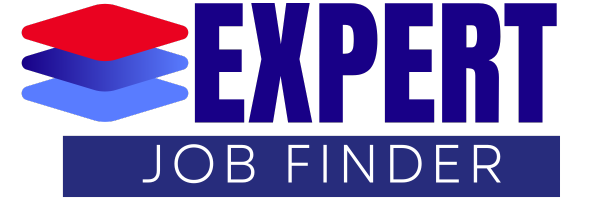Featured jobs are highlighted for a reason. Employers and job sites like Seek, Indeed, Jora, and LinkedIn pay to make these jobs more visible. This helps them get more applications quickly.
In Australia, knowing about these jobs can help you understand the competition and potential benefits. You might find jobs with higher pay or better benefits.
This guide will show you where to find these jobs and how to spot them. We’ll look at job boards, company websites, recruitment agencies, and social media. This way, you can find promoted roles easily.
You’ll learn to understand the language and design of these ads. You’ll also know how to tell if a job is promoted or not. Plus, you’ll learn when to search for jobs to increase your chances.
We’ll give you tips on setting up alerts, using filters, and making your LinkedIn and Seek profiles stand out. This will help you find the right job opportunities.
Our advice is for everyone, whether you’re actively looking for a job or just keeping an eye out. This article will help you focus on the best job openings and apply with confidence.
Understanding what counts as a featured jobs listing
Featured jobs are special listings that get more attention. They appear on job boards, company websites, and social media. These ads have badges, logos, and extra content like images and videos.
Definition and characteristics of featured listings
These listings are marked as “featured” or “sponsored”. They include more details than regular ads. This can be team photos or a short video.
How featured listings differ from standard job ads
Standard ads show up based on their ranking or when they were posted. Featured ads get a boost to stand out more. This means more people click on them.
Featured ads often have company logos and special tags. They also get prime spots that grab attention. Standard ads don’t usually have these extras.
Why employers pay to feature roles
Employers pay to feature jobs to find the right people faster. It helps them attract more candidates, especially for important roles. Recruitment agencies also use this to offer better services and charge more.
- Urgent hires for shift work
- Executive and senior appointments
- High-turnover retail and graduate intake campaigns
- Specialised technical positions with skills scarcity
Featured jobs are a sign that employers really want you. They might get more responses, but there’s more competition too.
Where to find featured job openings on major Australian job boards
Finding featured jobs on major boards requires a bit of effort. Look for badges, shaded listings, and roles near the top of search results. These are the priority jobs you want to see first.
On Seek, look for jobs marked as Seek featured or Premium. These roles are often at the top of category pages and in targeted email alerts. They have shaded backgrounds, employer logos, and words like “Featured”. Employers who buy Applicant Manager or Premium packages get their jobs shown first.
Indeed uses “Sponsored” or “Promoted” badges for paid listings. These jobs appear above regular results and might include salary info or extra employer details. Roles with lots of competition are often promoted because of the pay-per-click model.
Jora highlights important jobs by marking them as Jora highlighted careers. Look for jobs at the top of the page and with direct employer links. The original source can affect how prominent a job is, so check where it comes from.
LinkedIn shows promoted jobs in feeds and targeted suggestions. Look for recruiter outreach, promoted tags, and “Easy Apply” with highlighted branding. Jobs that match your profile might be promoted by Premium job posts or Recruiter tools.
- Use platform indicators: badges, shading and text labels show paid priority.
- Compare the same vacancy across sites; a role appearing as featured on multiple boards often signals urgent hiring.
- Follow employer pages and set alerts for top jobs to catch newly promoted listings.
How company career pages showcase premier positions
Many employers save their best jobs for their own career pages. These pages are the first place to find top jobs. They let employers control how jobs are presented and when they are available.
Companies target specific candidates with special job listings. These include graduate programs and leadership roles. They have clear instructions and unique application forms.
Employers promote key jobs through various channels. They use recruitment pages, banners, and newsletters. They also use LinkedIn and employee referrals to reach the right people.
Look for short application times and internal referrals to spot top jobs. Dedicated recruiters and quick responses are also signs. These show a job is a priority for the company.
- Check the careers homepage hero for “Priority role” or “Featured vacancy” tags.
- Sign up for employer alerts and newsletters to catch exclusive listings early.
- Use Glassdoor and LinkedIn company pages to confirm structured hiring programs.
Apply directly for exclusive jobs to not miss out. Regularly check company career pages. This boosts your chances of getting into top roles.
Recognising featured roles in recruitment agency feeds
Recruitment agency feeds show the most urgent and valuable job openings first. They are before these jobs are listed on public boards. By reading these feeds, job seekers can find top jobs, see which employers pay for special exposure, and apply fast to urgent jobs.
Newsletters from Hays, Randstad, Michael Page, and Robert Walters highlight key vacancies. They use clear banners and short summaries. This makes it simple to find featured jobs and get more information or contact the recruiter.
- Look for tags such as “Featured” or “Priority” in email headings and message snippets.
- Pay attention to boosted social posts that link back to recruitment agency feeds.
- Note when a role repeats across multiple agency channels; that often indicates a prominent role.
Many agencies run special campaigns to find certain types of candidates. These campaigns appear as sponsored ads on job sites and in paid social media. They offer a stream of featured jobs for both active and passive job seekers.
Agency websites and talent communities have exclusive job listings not seen on public job boards. You might need to sign up to see full job details, benefits, and client names for these roles.
- Register with specialist recruiters in your field and keep your CV current in their portal.
- Subscribe to curated newsletters from top Australian firms to receive early alerts.
- Build relationships with consultants so they consider you for exclusive listings and confidential briefs.
When a job posting includes direct recruiter contact, unique role details, or a “Client Exclusive” tag, it’s a top chance. Check the recruiter’s credentials and ask for corporate references to confirm the job is exclusive before applying.
Using search filters and alerts to surface top jobs
Smart use of search filters and timely job alerts helps you find priority career openings without endless scrolling. Set up focused notifications and refine filters to spotlight featured jobs that match your experience and location.
Setting alerts for promoted and highlighted careers
- Create keyword-based job alerts on Seek, Indeed, LinkedIn and Jora. Include terms such as “featured”, “featured listing”, “sponsored” and your specific roles like “senior project manager”.
- Subscribe to company career alerts and agency newsletters from firms such as SEEK, LinkedIn Talent Solutions and Hays to receive direct notice of promoted career openings.
- Test and prune alert keywords regularly. Focus alerts on high-value roles to reduce noise and increase the chance of seeing top jobs first.
Effective filter combinations for premier positions
- Combine “posted within 7 days” with seniority, location and salary range to find active, higher-priority listings.
- On LinkedIn, use “Easy Apply” plus “Posted in the past week” and company size filters to surface roles employers prioritise.
- On Seek, sort by date listed and use category filters; premium postings often stay near the top even when filters are applied.
- On Indeed, watch for the “Sponsored” indicator and toggle remote versus on-site to expand featured job visibility.
- Refine filters over time. Narrow combinations reveal better matches among career openings and reduce irrelevant results.
Analysing job ad language and formatting for prominence
Recruiters use clear signals to highlight certain positions. Look for urgent phrasing, benefit details, and visual cues. These help you know which jobs to focus on.
Language is key. Watch for direct commands like “apply now” and time-limited phrases. Words like “exclusive opportunity” or “urgent” mean the employer wants action fast.
Details about pay can also signal interest. Look for salary bands, bonuses, and relocation offers. These show the employer is serious about attracting the right people.
Formatting matters too. Ads with bold headlines, bullet points, and images grab attention. Videos and logos make the ad stand out, aiming for top talent.
Priority postings have stronger calls-to-action. Phrases like “submit CV within 48 hours” or “apply today” are common. They indicate a quick process for key roles.
- Look for longer briefs that explain team structure and career progression.
- Check for clear role impact statements and measurable outcomes.
- Note when ads list application steps or shortlisting timelines.
Match your application language to the job ad. Use similar phrasing and show your immediate value. This increases your chances for featured jobs and prominent roles.
Social media signals that reveal highlighted careers
Social platforms show when employers highlight certain jobs. Look for special badges, more engagement, and detailed posts. These signs point to jobs that are more important than others.
Employers often use LinkedIn, Facebook, and Instagram for job ads. These posts have a “sponsored” tag. They might include videos, testimonials, or a special application link. These signs help you spot important job ads easily.
Also, look for organic boosts. When staff share jobs, or influencers talk about them, it’s a sign. If many big names share the same job, it’s likely a priority for the employer.
- Follow target employers and industry influencers to catch featured jobs early.
- Enable LinkedIn job suggestions and set alerts for promoted campaigns.
- Check post links back to the original listing to verify authenticity and exclusivity.
Community hubs, like healthcare groups on Facebook or LinkedIn communities, share top jobs. Keep an eye on these to find special jobs not listed on big job sites.
Watch for engagement spikes, sponsored labels and multiple shares from credible accounts; these are reliable social signals for highlighted careers.
When you see job ads that stand out, they’re worth your attention. But always check the employer’s career page for details. This way, you avoid wasting time on unofficial posts and focus on where employers really want to hire.
Paid vs organic indicators of prominent roles
Job seekers need to know the difference between paid and organic listings. Look for visual badges and employer-branding banners. These show why some jobs are highlighted.
Paid posts have clear job descriptions and recruiter contact info. They might offer bonuses or relocation help. Employers with ads often want to hire quickly.
Organic listings are in chronological order or based on relevance. They might not have badges but offer straightforward job details. They also have less competition in some fields.
How to tell if a listing is paid promotion
- Search for labels like “Sponsored”, “Promoted”, “Featured” or “Premium”.
- Note placement: paid ads sit above organic listings or in dedicated slots.
- Repeated appearance across searches or on multiple platforms signals targeted promotion.
- Enhanced visuals, employer videos or branded headers often indicate a marketing push.
Benefits and limitations of applying to promoted roles
- Benefits: quicker process, greater recruiter attention, clearer briefs and possible extra perks.
- Limitations: higher applicant volumes, occasional lack of full role detail and duplicate postings that make tracking difficult.
- Watch for employer branding posts that aim to boost reputation rather than fill an immediate vacancy; verify the opening with the recruiter when in doubt.
Balance urgency with due diligence. Ask about timelines, confirm whether the position is active and check for duplicates across platforms before committing time to an application for any promoted role.
Evaluating exclusivity: how to spot exclusive listings
Exclusive listings can give you access to top jobs that aren’t on public boards. Look for signs that a job is only available privately. Also, learn how to check if it’s real before applying.
Look for labels like “Client exclusive”, “Confidential appointment”, or “By invitation only”. Jobs listed only on an agency portal or through internal referrals are often exclusive. This means they’re not open to everyone.
Executive search firms and specialist recruiters often find jobs through LinkedIn or private emails. This method can lead to jobs with fewer candidates and quicker hiring times.
Be careful of vague job descriptions, requests for money, or unusual personal data. Also, be wary of recruiters who won’t share employer details. Jobs that promise too much money without a company name are suspicious.
To verify a job, check the recruiter’s LinkedIn and agency website. Confirm the employer’s details through their corporate site or ABN lookup. Ask for formal job documents or contract terms. Also, compare the job with other listings in your industry.
- Confirm recruiter credentials and track record.
- Request an official job brief and written contract terms.
- Verify the employer through company pages or ABN records.
- Avoid sharing sensitive information until verification is complete.
Exclusive listings and invitation-only roles can lead to great opportunities. Approach each chance with caution and verify the details to protect your career and personal information.
Timing and market signals for when featured roles appear
Knowing when employers post featured jobs is key. These roles often pop up after budget cycles and project starts. Seasonal demand also plays a big part. By watching these signs, you can find the best career opportunities.
In Australia, hiring seasons tend to fall into a few key times. January to March is busy with new budgets and plans. April to June sees roles linked to financial-year strategies. Then, September to November is when end-of-year recruitment happens.
Graduate intakes and university graduations lead to mid-year job searches. Retail and hospitality jobs spike before November and December. Public sector hiring often matches federal and state budget announcements.
Construction, mining, and tourism have cyclical demands that lead to featured hires. Funding for infrastructure, big project starts, and tourism peaks create short-term job opportunities.
Economic changes and new rules lead to urgent job listings for senior or niche roles. Startups with funding rounds and health or tech booms also highlight priority positions. Government contracts often mean immediate, high-profile hires.
Keep an eye on ABS labour statistics and RBA announcements. Follow employer press releases and reports from Hays and SEEK to track trends. Industry newsletters can also show which roles might be featured.
- Set alerts to capture short-lived featured jobs linked to market triggers.
- Time applications to hiring seasons Australia for higher success rates.
- Keep documents ready so you can apply the moment a role is posted.
Optimising your profile to be found for highlighted careers
To stand out for featured jobs, start by making your headline and summary clear. Use profile keywords that match the roles you’re aiming for. Recruiters look fast, so a concise headline like “Senior Data Analyst — Tableau | SQL | Azure” is key.
Include specific terms, certifications, and industry phrases in your fields. Add certifications like AWS or CPA Australia where they fit. Keep your sentences short and to the point for quick scanning by hiring managers.
- List measurable outcomes in position descriptions: revenue growth, cost savings, project delivery times and team size.
- Include links to portfolios, case studies and documented project results to back claims for premier positions.
- Add recommendations on LinkedIn and ensure referees can respond promptly when contacted about exclusive listings.
Prepare tailored CV templates and short cover letters that match the language of promoted ads. Use the same profile keywords in your skills and experience sections. This boosts your relevance for top jobs.
Make moves to attract recruiter attention for highlighted careers. Set discreet Open to Work options on LinkedIn, follow target companies, join relevant groups, and post occasional updates. Regular updates keep you visible in search results for top jobs.
Keep each profile field up to date and focused on the roles you seek. Short, specific bullets are better than long paragraphs. This clarity helps your profile rank when employers search for candidates for featured jobs.
Practical checklist for applying to featured job openings
Before applying to featured jobs, make sure the listing is real. Look for badges, recruiter info, and the employer’s career page. Also, check the application deadline, if the role is exclusive, and save contact details for follow-up.
Customise your CV and cover letter for the job. Use the job’s keywords and responsibilities. This way, your documents will match the job perfectly.
Apply exactly as asked: use the company portal, agency system, or specified email. Follow the naming and file-type rules. Keep track of each application, recruiter contact, and set a follow-up reminder in 7–10 days if you don’t hear back.
Prepare for interviews with examples that show your skills. Confirm the interview details in advance. After an offer, get all details in writing. Check the employer’s ABN or corporate profile. Use Seek or Hays data to negotiate, and focus on roles that fit your long-term goals.


